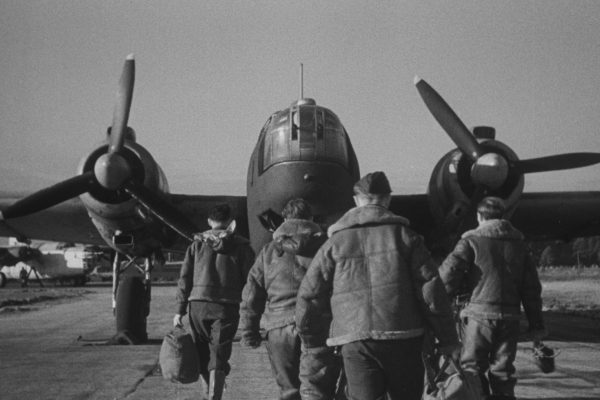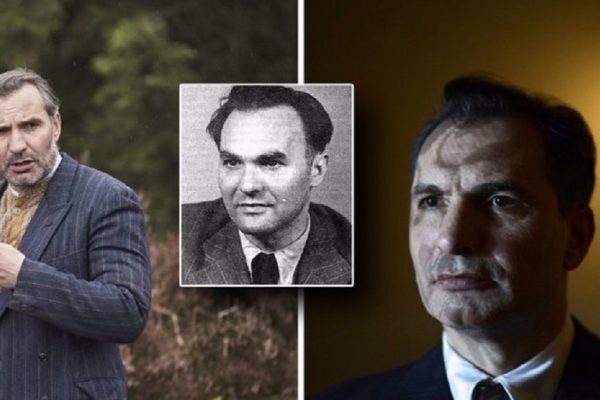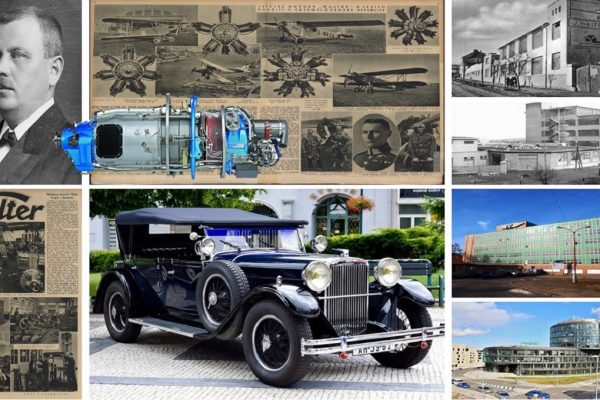Imagine walking down the sidewalk in Prague when suddenly the larger than life body of an airplane moves past you. That is exactly what happened just a few months after the end of WWII with the plane that would be known as the Letov L-290 Orel.
LETOV is an aircraft company located in Prague – Letňany, Czech Republic. It is the oldest aircraft company in the region and was founded in 1918 by the Czechoslovakian Ministry of Defense to repair World War I trophy planes.
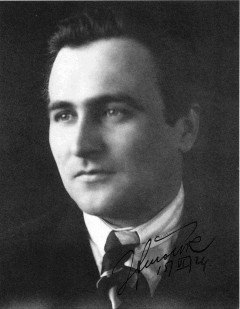 As early as 1921, the first Czechoslovak fighter plane Letov Š1, designed by the engineer Alois Šmolík, took off as the first of many designed and manufactured machines.
As early as 1921, the first Czechoslovak fighter plane Letov Š1, designed by the engineer Alois Šmolík, took off as the first of many designed and manufactured machines.
During the 1920s and 1930s Letov developed and manufactured more than 50 types of aircraft of all categories.
In fact, by 1939, some 50 aircraft types were built.
During World War II the factory served as repair shop for the German Luftwaffe. Production lines were also set up during World War II for combat versions of the Ju 290 aircraft, commencing with the Ju 290 A-2, which carried a search radar for its patrol role.
Hitler’s Personal Transport
On November 26, 1943, Ju 290 A-5, no. 0170, along with many other new aircraft and prototypes, was shown to Adolf Hitler at Insterburg, East Prussia. Hitler was impressed by its potential and told Goering that he wanted a Ju 290 for his personal use.
A Ju 290 was not however assigned to the Fliegerstaffel des Fuehrers (FdF) until late 1944, when an A-7 was supplied, works number 0192, which had formerly been assigned to FAGr 5. Modifications were completed by February 1945 at the FdF’s base at Pocking, Bavaria, a Stammkennzeichen alphabetic designation code of KR+LW being applied. Hitler’s pilot, Hans Baur, tested the aircraft, but Hitler never flew in it.
The aircraft was fitted with a special passenger compartment in the front of the aircraft for Hitler, which was protected by 12 mm (.5 in) armour plate and 50 mm (2 in) bulletproof glass. A special escape hatch was fitted in the floor and a parachute was built into Hitler’s seat; in an emergency it was intended that he would put on the parachute, pull a lever to open the hatch, and roll out through the opening. This arrangement was tested using life-size mannequins.
Hans Baur flew the aircraft to Munich-Riem airport on March 24, 1945, landing just as an air-raid alert was sounded. He went home after parking it in a hangar but on returning to the airport, he discovered that both hangar and aircraft had been destroyed by American bombers.
In 1940, the Junkersova konstrukční kancelář (Junkers Design Office) wanted to do some development work on their aircraft in Prague. In the former Lufthansa workshops at Ruzyne airport, Ju 290 A 8 (serial number 0212) and parts of the Ju 290 B 2 were found after the war.
Letov L-290 Orel in Prague
When the Letov factory completed the Ju 352 repair at Ruzyne, it offered the Ministry of Transport the Ju 290 to finish. This airplane and its parts, after the permission of the airport administration, were released and the plane body was transported to the Letov factory.
Here it is maneuvering through the city…
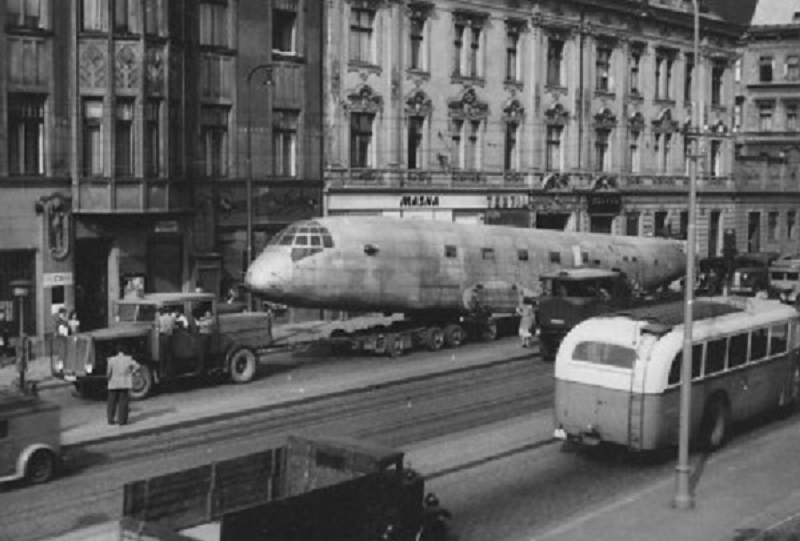
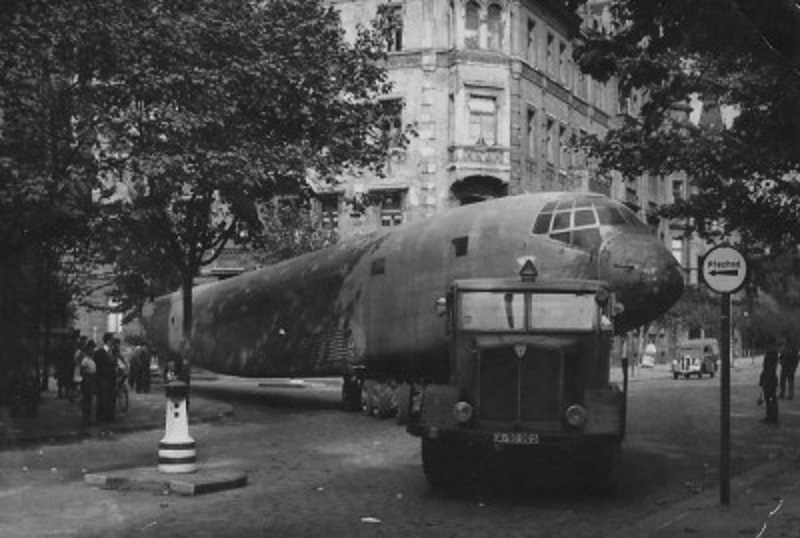
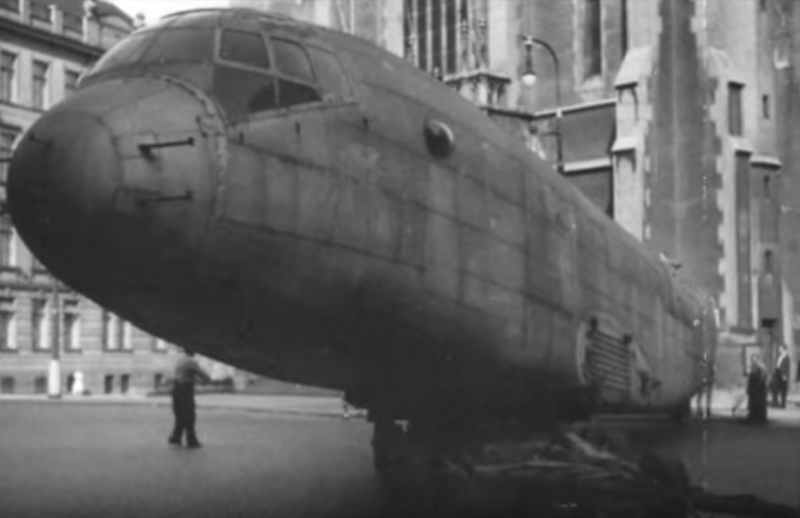
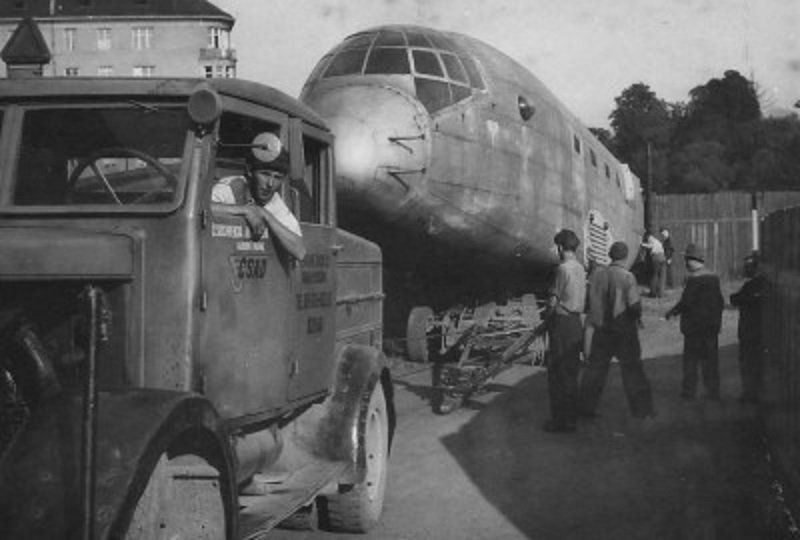
The aircraft was ideally for 40-48 passengers, complete with dressing rooms and two toilets.
The recommended crew was six members – two pilots, a radio-telegraphist, a navigator, an on-board mechanic, and a stewardess.
The rebuilding of the military version of the Junkers Ju 290 to the civilian airliner was given the name Letov L-290.

Letov L-290 Orel
The aircraft was powered by four eight-cylinder engines built by BMW (801) and the propellers from a FW 190 fighter.
The first flight was carried out by flight pilot F. Kládek on August 1, 1946, and the flight took two hours.
The L-290 was introduced to the public on a national air flight in Prague Ruzyne in September of 1946.
Watch this short video…
In the period after the Second World War in the early 1950s, the production and installation of wings and hull rear panels of Soviet fighter aircraft MiG-15 began in Letov. However, the final assembly of these aircraft was already in the new Aero Vodochody race. MiG-15 followed by the MiG-19 and MiG-21 fuselage and tailgate production.
At the beginning of the 1960s, Letov, in cooperation with Aero Vodochody, started the development and production of the wing and the rear of the fuselage of the new Czechoslovak training aircraft L-29 Delfín. These aircraft were made over 4000 units and the Delfin became the most manufactured aircraft in its category. Dolphins are still used reliably in many aviation world.
For the success of the Delfini, the L-39 Albatros, the wing and rear of the fuselage, were developed and manufactured in Letov in the early 1970s. The Albatross has produced more than 2,500 pieces and has been shipped to many countries around the world. These aircraft are amongst others very often used by prominent aerobatic groups such as the Breitling Jet Team or the Lithuanian Balic Bees Jet Team. Subsequently, Letov participated in the development and production of the L 159 Alca.
Over 4,000 wings and empennages for L-29 Delfín, a jet trainer aircraft that became the standard jet trainer for the air forces Warsaw Pact nations in the 1960s, were built by Letov. The company has also built wings and empennages for 2500 L-39 Albatros trainer aircraft since the 1970s.
Following the fall of socialism in Czechoslovakia in 1989, Letov failed to assert itself on the international market and in 2000 it was bought by French Groupe Latécoère. The company now manufactures parts for large passenger aircraft. You can visit their website, www.letov.cz.
If you have not already subscribed to get TresBohemes.com delivered to your inbox, please use the form below now so you never miss another post.
Remember, we rely solely on your donations to keep the project going.
Become a friend and get our lovely Czech postcard pack.


